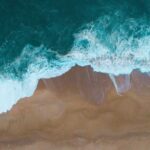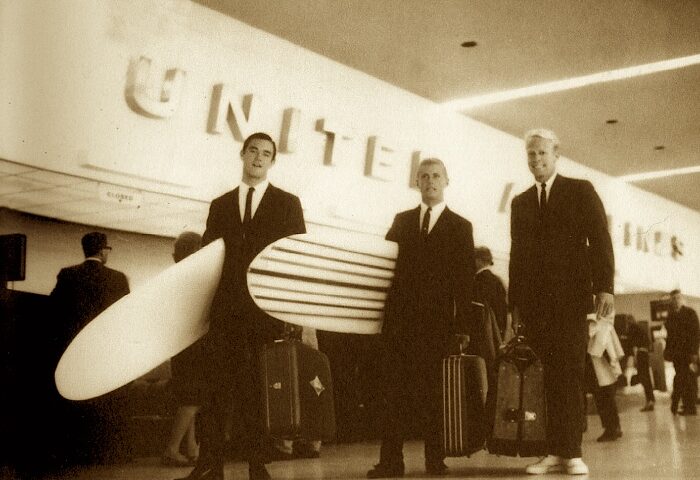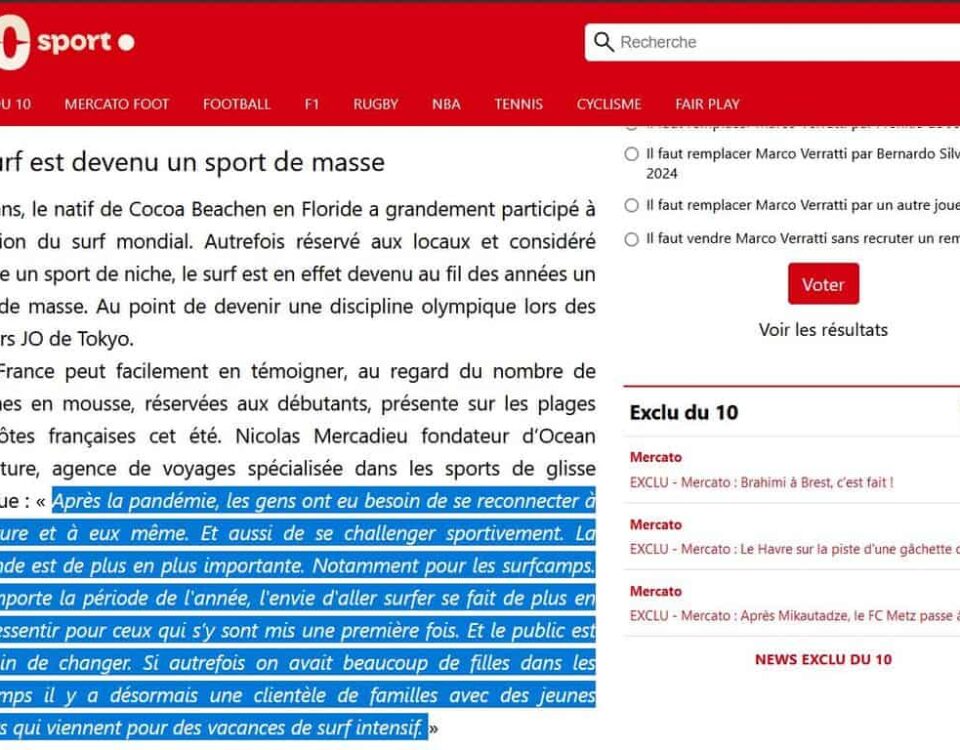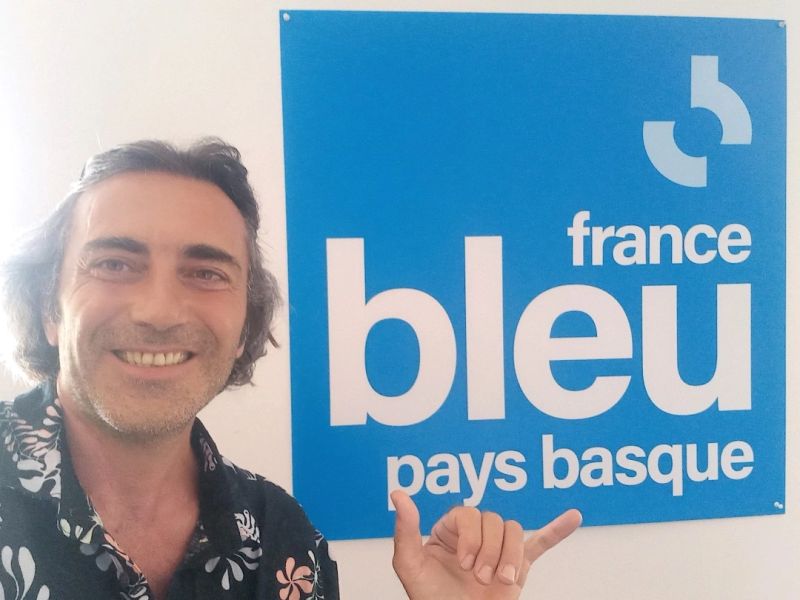
Learn to Surf in Hossegor : Everything you need to know to progress!

Surf camps by the surf travel craftsman: thank you Sud Ouest!
Many apprentice surfers who come to Biarritz ask us what the best surf films are. According to Roger Ebert: The particular charm of “The Endless Summer” is something I haven’t quite figured out in my mind yet. It’s all the more strange because here, at last, is a completely simple, fresh and natural film, designed purely to please. Yes, it is. And why is that?
Part of the answer may lie in the unconventional approach of the filmmaker, Bruce Brown. He packed a 16mm camera and an assortment of telephoto lenses into a suitcase and set off around the world one morning, accompanied by two surfers. With a tiny budget ($50,000 for a 90-minute theatrical film is unheard of), they flew to the west coast of Africa, sampled the beaches of Senegal and Ghana, then descended on Cape Town.
Advertising
After surfing the Indian and Atlantic Ocean beaches of the Cape Peninsula, they hitchhiked 1,000 miles up the coast to Durban along the famous Garden Route, and found the “perfect wave” at Cape St Francis – a metre-long loop that gave 15-minute laps and came in so regularly it felt like it was “made by a machine”.
Other stops were made in Australia, New Zealand, Tahiti and Hawaii. The last of these provided breathtaking images of the “Pipeline”, an enormous wave of great force rolling over a coral bed.
Brown recounts these adventures with the nonchalance and exaggeration of a home cinema enthusiast. “The odds against a wave like this are 20,000,000 to 1”, he says in amazement after discovering the perfect wave. Whose odds? He uses the word “unique” as if he were an antiques dealer. His attitude towards the nations he crosses is essentially that of a wide-eyed frat boy. ” When these natives came paddling “, he says, ” we didn’t know if they came to surf — or to dine.”
The funny thing is that this second-rate exaggeration and casual enthusiasm is exactly what the film needs. When you’re on the beach and the waves are good, who can be bothered to find the right odds? And what difference does it make, anyway?
If the film itself delivers exactly what it promises – 91 minutes of wish fulfilment – the way it’s shot should offer professional filmmakers the same. Shunning the tonnes of equipment usually carried on location, Brown used only what he could carry. The magnificent photographs he brought home almost make you wonder if Hollywood has tried too hard.
Contenus de la page
Endless Summer 2
“The Endless Summer II” is a sequel to a film made before Weaver or O’Connell were born. The original “The Endless Summer” was released, according to Brown, in 1964, although the reference books cite 1966 and I remember meeting Brown at the film’s Chicago release in 1967. None of this matters in the slightest, but throughout the film I kept getting distracted by Brown’s insistence on 1964 – perhaps because there was so little else for me to think about.
The film is wonderfully photographed. Right from the start there are fabulous shots of waves and surfers. Some shots even go inside the “barrel”, so we can see the wave bending over the surfer’s head. What a way to get excited! These are great shots. We see them again, and again, and again. The key word in the title is “endless”, not “summer”.
Advertising
In search of perfect waves, we follow the guys on their odyssey from Southern California to Costa Rica, France, South Africa, Fiji, Australia, and back home, with some footage from Hawaii, even though Pat and Wingnut inexplicably haven’t been there. On their journey, they meet up with the tanned veterans of the first ‘The Endless Summer’ film, who are all now 30 (or 28, or 27) years older, but still hanging out on the beach. Every now and then there’s a little nugget of information, for example: ‘There are eight million Zulus in South Africa, but only one of them is a surfer’. Curiously, the filmmakers found this very Zulu, and interview him on the one subject he can’t discuss with his 7,999,999 Zulu compatriots. It’s a film with a narrow vision.
Although the film is 95 minutes long, it does not contain much information about surfing. He observes that in 1964, surfers mostly used long boards, but today they use short boards.
He doesn’t mention the differences between the two boards, or the reasons why one or the other might be used. Nor do we learn how you learn to surf, or what techniques and skills are useful. We learn that there is a “pro tour”, but there is no information on how the sport is graded or how the competitions are run. Brown seems primarily interested in finding great waves, surfing them and being “stopped”. He intersperses his surfing scenes with various elements of local colour, such as when Pat and Wingnut drive through an animal reserve in a beach buggy and are chased by lions. It’s risky, but not as disturbing as the beaches of France where youngsters end up with multiple breasts and ask local surfers where to look in an emergency.
There’s such a harmless innocence about it that it’s seductive. Surfers, like all amateurs, have a certain folly: they see the world through the prism of their speciality. Nothing else matters. “If you spent a day in every place where surfers ride the waves”, the film wistfully tells us, “it would take you 50 years to visit them all”. But by golly, when you do, you’ll be glad.
Big Wednesday, le film
As part of our writers’ favourite films series, Maxton Walker sings the praises of a surf film with dudes, poetry and a big heart
Point Break has a lot to answer for. Kathyrn Bigelow has crossed the line, the homoerotic surfing buddy fest has become the surf film of our time. And that’s a monstrous injustice. Any Point Break aficionado who decides to watch Big Wednesday will instantly be struck by the huge debt Bigelow owes to John Milius’s freewheeling homage to 1960s Californian hedonism.
Big Wednesday follows three young surfers from 1962 to 1974 as they catch waves, fight, have sex and try – mostly successfully – to avoid growing up. There’s no homoeroticism on these shores. Meet Matt (Jan-Michael Vincent), the greatest surfer of his generation, who copes with the demands of fatherhood by gradually becoming a beach bum. There’s Leroy the Masochist, played by Gary Busey (a character he reprised in each of his subsequent films, including Point Beak), and Jack (William Katt), the dullard, who goes off to fight in Vietnam.
And then there’s the man known only as Bear, the film’s answer to Obi-Wan Kenobi, who makes the guys‘ surfboards while philosophising endlessly about the nature of surfing. (“These guys are going to surf forever”, a kid tells Grizzly Bear as he polishes a surfboard. “Nobody surfs forever”, comes the reply).
Milius was a surfer himself at the time. And it’s clear to everyone, surfer or not, that Big Wednesday is one for the heart. No film, at least for me, has ever come close to capturing what must have been the feel of California in the 60s. There’s poetry in the endless shots of guys catching waves as the years roll by. The sea itself is a living, breathing entity, defining the mood of the characters as the years go by: the ageing surfers talk with dread about going “inland”, finding work and having children, as if this were akin to death. The blazing West Coast sunshine permeates virtually every shot. And it’s a film about a very particular time and place. Jack’s girlfriend, who has just arrived from Chicago, says: “Back home, being young was something you did until you grew up. Here, that’s it.”
The big Wednesday sea
Photograph of the Big Wednesday Sea: BFI
I’m not sure why it grabbed me when I first saw it on TV in the 80s. There’s nothing more terrifying than surfing, and I was running miles away from these people in real life. Maybe it had something to do with the opening credits, which are themselves a work of art, a poignant montage of vintage black and white surf photos set to music by Basil Poledouris.
I once watched it with a Californian surfer, who told me that not only was it his favourite film but that it explained “what I’m all about” – so Milius has clearly captured something special. In the end, it’s probably not a great work of art. Yes, “Big Wednesday” – the day when the biggest surf in living memory is thrown, the day when a surfer has to stand up and prove they’ve got what it takes – is a highlight, but there’s never any real sense of threat or danger. Even the Vietnam subplot feels a little forced, although my favourite scene is when the guys turn up in an army office and try to find different ways to dodge the Vietnam draft (Oddly, Milius tried to join the marines but was refused entry because of his asthma).
Maybe, in the end, it’s just an exuberant collection of great scenes – but what Big Wednesday has is heart, which, on reflection, is what annoys me about Point Break. Yes, it’s a journey. But it takes the lyricism and passion of Big Wednesday and then somehow manages to make a mockery of it.
Find yourself another beach, Johnny Utah.
Heavy Water : Nathan Fletcher
Super natural : Christian Fletcher
https://youtu.be/j6BPtrLyYLc





